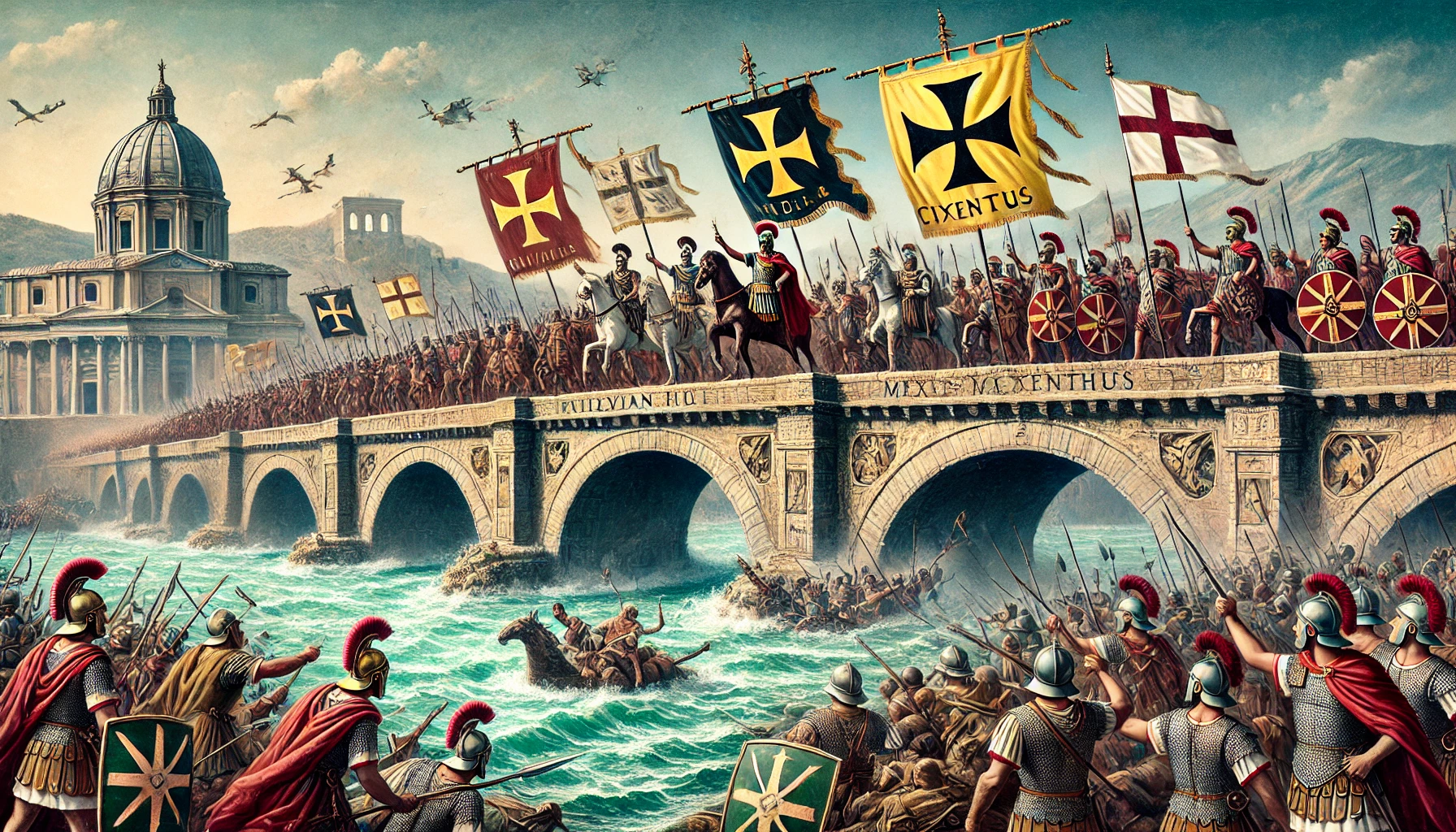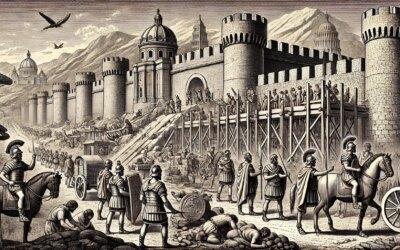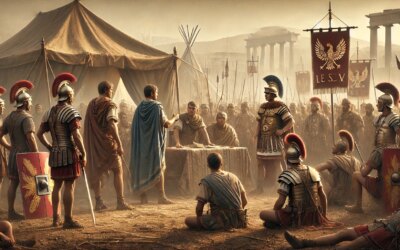A Struggle for the Throne
By 312 AD, the Roman Empire was divided. The Tetrarchy system, meant to provide stability, had collapsed, leading to a power struggle between rival emperors. Constantine, ruler of the Western Roman Empire, sought to claim supreme control by confronting Maxentius, who held Rome and Italy.
The Vision Before Battle
According to legend, on the eve of battle, Constantine experienced a divine vision. He reportedly saw a symbol in the sky—either a cross or the Chi-Rho monogram—accompanied by the words “In this sign, you will conquer.” Inspired by this, he ordered his soldiers to paint the Chi-Rho on their shields, marking the first time a Roman army marched under a Christian symbol.
The Battle at the Tiber
On October 28, 312 AD, the two armies clashed at the Milvian Bridge, spanning the Tiber River. Constantine’s forces, battle-hardened and disciplined, quickly overwhelmed Maxentius’ troops. As the enemy attempted to retreat across the bridge, panic ensued, and many drowned in the river—including Maxentius himself.
Victory and the Rise of Christianity
With his victory, Constantine entered Rome as the undisputed ruler of the Western Roman Empire. He attributed his success to divine intervention, setting the stage for Christianity’s ascendance. Just a year later, in 313 AD, he and Emperor Licinius issued the Edict of Milan, granting religious tolerance to Christians across the empire.
A Turning Point in History
The Battle of the Milvian Bridge was not just a political triumph; it reshaped the religious landscape of Rome. Constantine’s conversion to Christianity influenced the empire’s future, leading to its eventual Christianization. The battle remains one of the most significant moments in both Roman and religious history.






